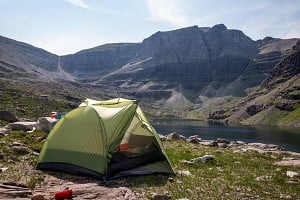
Rab have recently updated their classic hooped bivvy bag, the Ridge Raider. Roomier than some alternatives, but still a decent packable weight, this is a sturdy bag for fairly hardcore hill use, whether that's solo backpacking, mountaineering, bikepacking, or a mountain marathon type event. However the Ridge Raider comes at the sort of price you could spend on a quality one-person tent (and get a lot more living space for your money), so it's a fairly niche product. But in its niche, I think it's brilliant.
Weight and build quality
At 912g on my home scales, including pegs, pole, guys and stuff sacks (Rab say 890g), the Ridge Raider (not to be confused with the junk food of almost the same name) is hefty for a hooped bivvy.
Would you be better off with a full-blown tent? Well it's significantly heavier than some ultralight one-person backpacking tents on the market, but on the other hand I'd be willing to bet that in order to achieve their spectacular weights miles south of a kilo these specialists are going to be less robust and a lot more expensive than the Ridge Raider. One-person tents around the Ridge Raider's £350 price point tend to be a bit heavier, so here's where the Rab bivvy starts to look appealing if you're packing light, and don't mind sacrificing interior space.
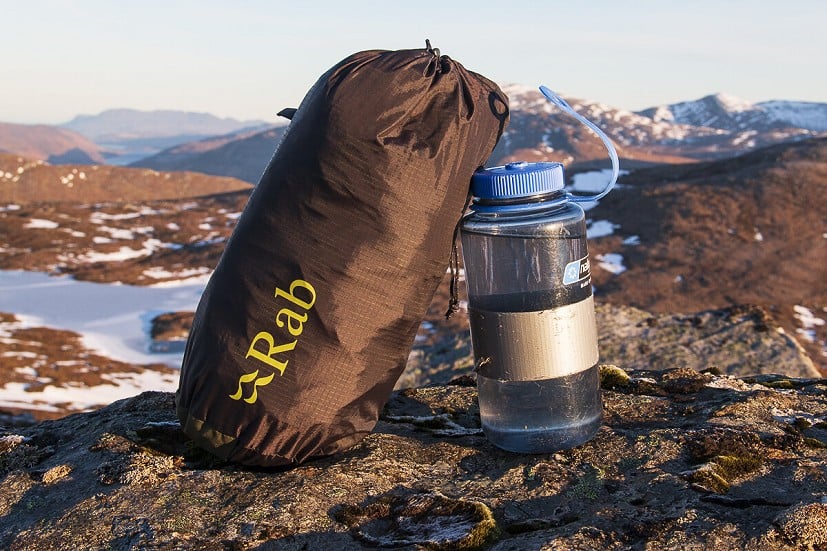
Comparison with other hooped bivvys might be more instructive. Of the models I've used in recent times the Ridge Raider is: a similar weight to Alpkit's Elan (£109.99), but feels more robust and has more headroom; around 400g heavier than the OR Helium (£200), but way more solid and spacious; and a bit lighter than the Trekmates Squall (£110), yet far better made and more weather-worthy. Terra Nova's Jupiter Lite Bivi is a couple of hundred grams lighter (and a fair bit cheaper), but since I've never seen one I can't say more than that. Overall I'd say the Ridge Raider's balance of weight, sturdiness, weather performance, and relatively generous living space (for a bivvy) makes it an attractive option despite the price.
This has to be one of the better models on the market, and if you can make the investment it ought to offer years of good service
In terms of both build quality and weather protection, it's more confidence inspiring than other hooped bivvy bags I've used. The fabrics feel tough; the seams are all well stitched and taped; pegs and guys are of good quality; and the pre-curved DAC aluminium pole is probably as good as you'll find. It's worth noting however that I did manage to snap the pole on my original review sample when fighting with pretty much all my might against a far-too-tight fit. I've not yet managed to do any damage to the replacement bivvy Rab sent (the eagle-eyed may spot the colour change in my photos).
Fabric, pegs and poles
This bag comes in either an understated green or a jaunty red. The upper side is Pertex Shield, a lightweight three-layer 15D ripstop fabric that feels tough for its weight, and even seems to have a little stretch. With a hydrostatic head of 15,000mm this is as waterproof as you'd be likely ever to need, even in wind-driven rain, and if anything it also seems a little less 'snappy' in the breeze than some tent flysheets can be.
Given their small size and single layer, condensation buildup is of course a major challenge for all bivvy bags, but on this score the air permeable Pertex Shield seems to fare well, with an impressive MVTR of 20,000 g/m2/24 hours. While it's impossible for an end user (or a reviewer) to offer objective comparisons of the breathability of various fabrics (not least because no two weather days are the same) I do think the Ridge Raider is less prone to condensation than other bivvy bags I've slept (or sometimes not slept) in.
Underneath you obviously want something a bit tougher, and the 40D ripstop nylon groundsheet is just that. This has high bathtub-style sides, so ought to keep you dry even if you're pitched on a bog or the groundwater rises with overnight rain.
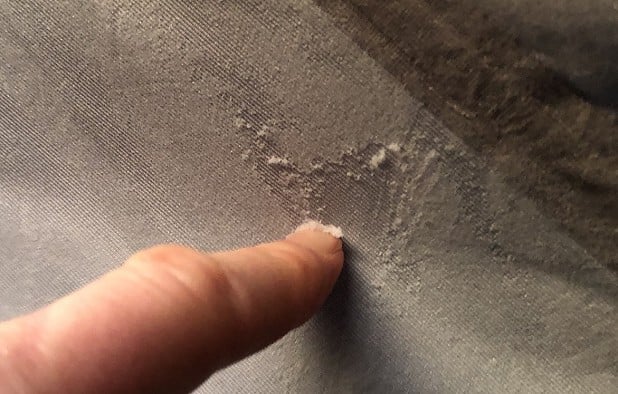
The metalwork is all high quality, with a single hooped DAC pole at the head end, a short inbuilt upright pole for extra height at the foot end, plus nine nice strong DAC V-stake tent pegs. The pegs have a slightly rounded top so you don't shred your hands, and an eyelet to thread a loop of cord to make them easier to extract (supply your own string).
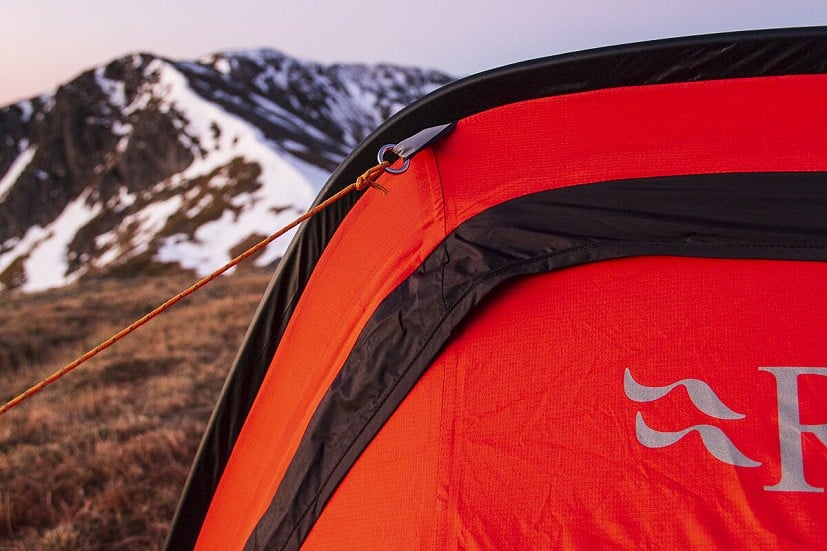
Pitching
One advantage of a bivvy bag over a tent is that you can generally fit it onto a smaller plot, and may not need as much level ground to achieve a decent pitch (a decent night's sleep is another matter). This potentially gives you more options when looking for a spot in the rough. However, for the hoop of a hooped bivvy to stay upright the pegs at each end have to be well set, so to get the advantage of its headroom you do need sufficiently soft ground. If the best you can manage is stones or bedrock (as on most of the Cuillin ridge for instance, or the average alpine route) then you could possibly leave the pole at home and treat the Ridge Raider as a simple hoop-free bag - not something I've yet tried.
As a single skin bivvy that requires the addition of only one short pole, the Ridge Raider is quicker and easier to pitch and dismantle than pretty much any tent I've used. Slide the pole into its sleeve, peg out the corners, tighten up the guys; you should be done in a couple of minutes. With four pegging points at the head end, two at the foot, plus three guylines, you need all nine pegs that come supplied.
I mentioned above the tight-fitting pole, and it's worth saying again that it really can be quite an effort to fit it into the second eyelet - and even more of a fight to pop the end back out again when you're packing away. A degree of brute force is needed, but guile and restraint too, or like me you may end up snapping the pole (and that's no reflection on the pole itself, which seems as strong as you could reasonably expect). The procedure is OK in a warm dry office, but I do find it harder with cold hands and wet fabric, out in the wind. Making a bivvy bag isn't precision engineering, and I think perhaps there's a degree of tolerance in the manufacturing since my replacement bag seems fractionally less severe than the original.
Weather performance
The upside to that tight pole fit is a nice taut structure at the head end. Pegged and guyed out securely, the Ridge Raider becomes a robust shelter that can stand up to plenty of weather, especially pitched toe into the wind. Compared with a tent you're low to the ground, so although the unstructured sides can bow they don't particularly act as sails. In a real storm, prolonged rain, or heavy snowfall, I'm sure I'd be happier in a solid four-season mountain tent, but the Ridge Raider is certainly more robust than most other bivvy bags, and when sleeping out in exposed high-level spots in gusty conditions I have so far felt well protected and secure. I'm not sure anyone would choose to bivvy on a genuinely nasty weather forecast, but if caught out then I think you'd fare pretty well in a Ridge Raider.
Rain beads well on the outside, and runs readily off the steep walls, though I imagine there could be some pooling on top if the bag sags over a rainy night. The fabric handles moisture on the inside really well too, and though there's always going to be some condensation in a bivvy the Ridge Raider seems less prone to it than other models I've used. It has fared well in a variety of conditions, from sub-zero and windy, to warm and rainy. Waking from a recent wet night in the garden (purely for the purposes of the test you understand), I found both the inside of the bag and my sleeping bag were absolutely bone dry. Even in cold conditions, often a test for condensation management, I've still felt reasonably dry by morning. Bivvy comfort doesn't get better than this.
Some designs incorporate permanently open vents, including in some cases at the foot end, but with the Ridge Raider you do have to remember to leave the door at least a little unzipped to avoid the risk of suffocating on your own farts (or indeed, suffocating literally). Luckily the main zip has a little storm flap that should help keep out wind-driven rain from most directions when the zip is open a bit. Perhaps equally important for UK use, the door has a separate zip-around midge screen, essential for sanity preservation in the summer hills.
Living space
A hooped bivvy offers more comfort and livability than a straight-up bag, but less than a tent, so represents a compromise between lightness and space. With a maximum height of around 60cm the big hoop at the top of the Ridge Raider offers more headroom than you'll tend to get, and its squared-off shape helps in this regard by giving you that height across more of the width of the door than a rounded arch would. Getting in and out still requires some contortions, and it's not a process you'd find much fun in the rain, but that's just a fact of this conventional tunnel-mouth door design.
With around 80cm width at the shoulder, and a total length of 240cm, this is a pretty big bivvy. At 1.83cm tall, and not what you'd call skinny I need a fair amount of room, and I certainly find the Ridge Raider less cramped than your average model. I can recline on my elbows in the doorway, read in comfort at night, and get changed inside without slipping a disk. My feet aren't up against the end. Forward of the door is a sizable vestibule (for want of a better word), and though you're not going to get a trekking pack in here as implied by Rab it does offer plenty of storage space for water, clothing, food, a book, and even your footwear if it's wet outside.
Down at the foot the addition of a small inbuilt upright pole gives some structure to the far end of the bag, helping to hold its shape in the wind and reducing contact between your sleeping bag and the walls. As someone with big feet I also appreciate the height it creates, where some bags can feel restrictive if you're lying on your back with your feet pointing up.
Overall, the space on offer in the Ridge Raider is one of its big selling points, and while you do still feel entombed it's not as in-yer-face as most designs I've tried.
Summary
A roomy model that's reassuringly robust in less than perfect weather, yet at a weight that won't trouble most users, the Ridge Raider is well suited to backpacking, bikepacking, and overnights in the hills. That too-tight pole is an annoyance, and I've no doubt some will baulk at the price, but niggles aside this has to be one of the better hooped bivvys on the market, and if you can make the investment it ought to offer years of good service.
Rab say:
This freestanding, single-skin bivi combines a waterproof bathtub base with an air-permeable upper built from Pertex® Shield Air. As a lightweight 3-layer fabric with an enhanced air permeable membrane, it delivers outstanding overnight dryness, condensation control and comfort.
With an overhead hoop and a micro pole at the foot, there's plenty of structured volume for sleeping with vital gear like your gloves, batteries, water bottle and backpack. The zipped main entry also comes with an integrated mosquito mesh door and an internal height of 60cm for a comfortable, almost tent-like experience.
At 890g with a packed size of 32cm x 15cm, it delivers a level of outdoor flexibility way out of proportion to its weight and scale.
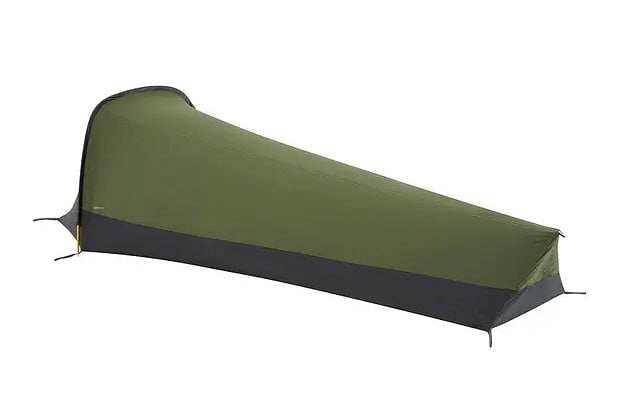



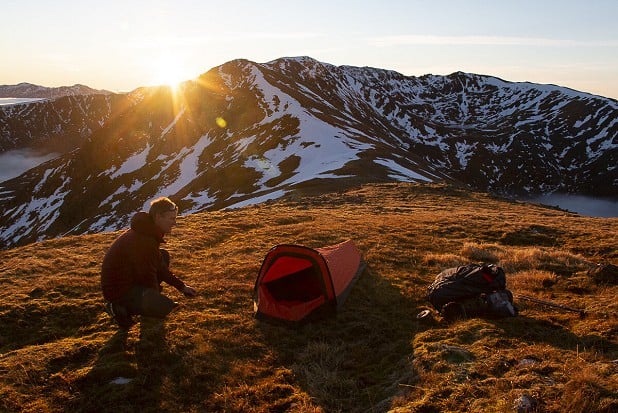

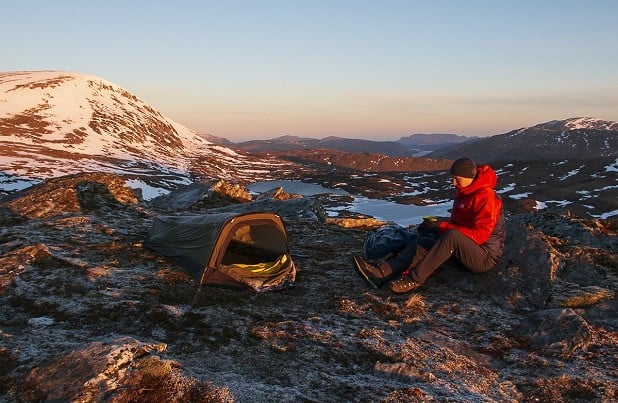
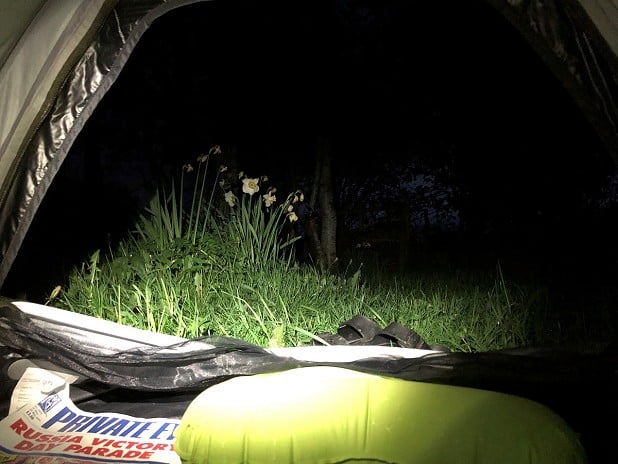
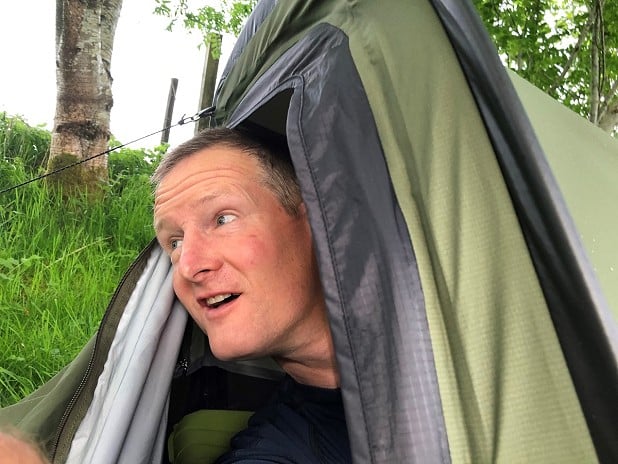
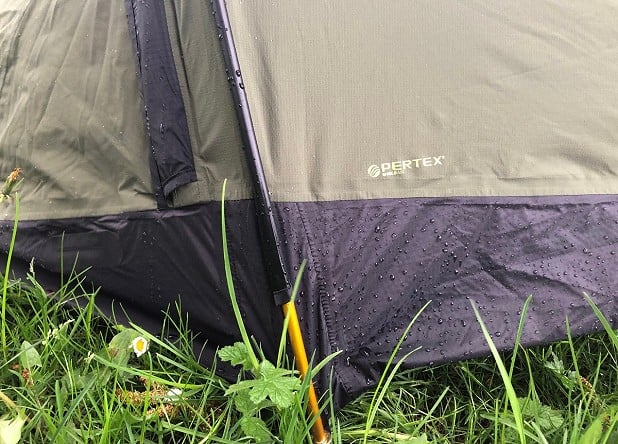
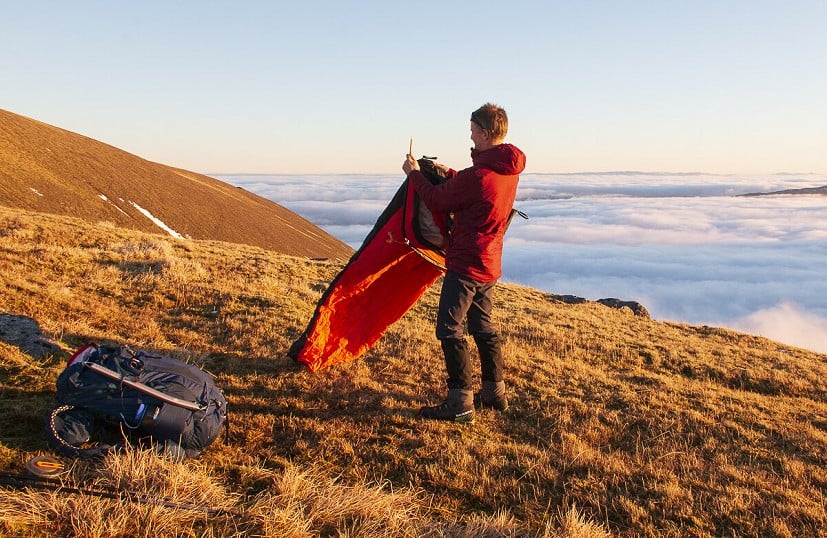
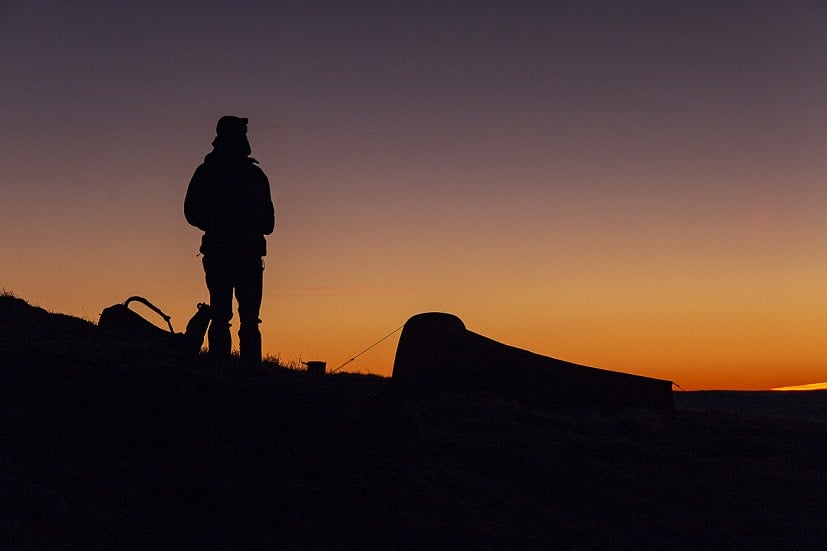
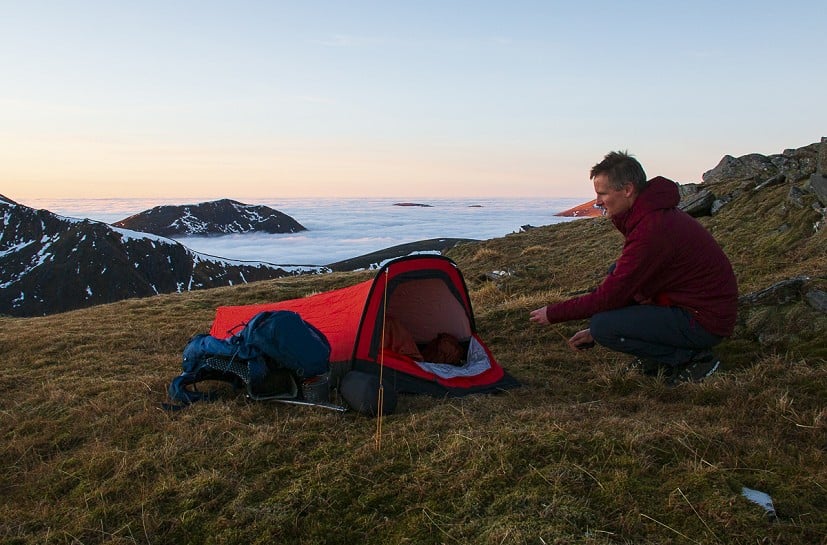

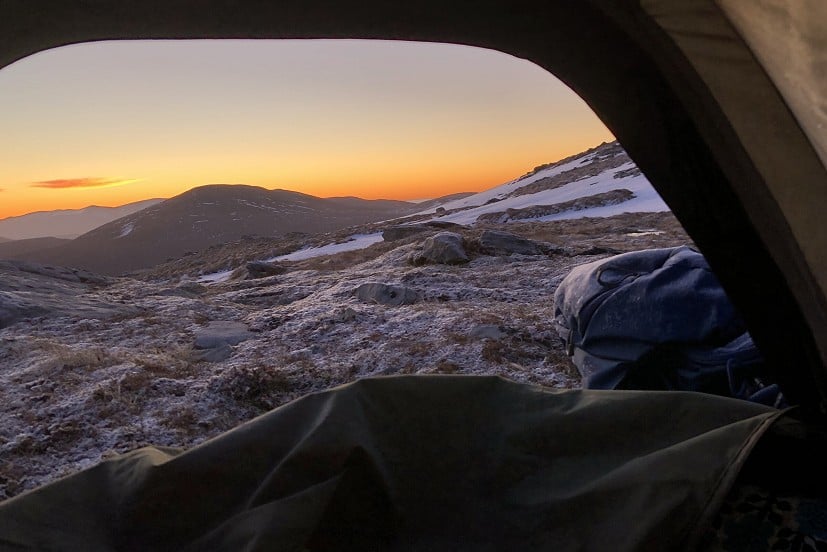
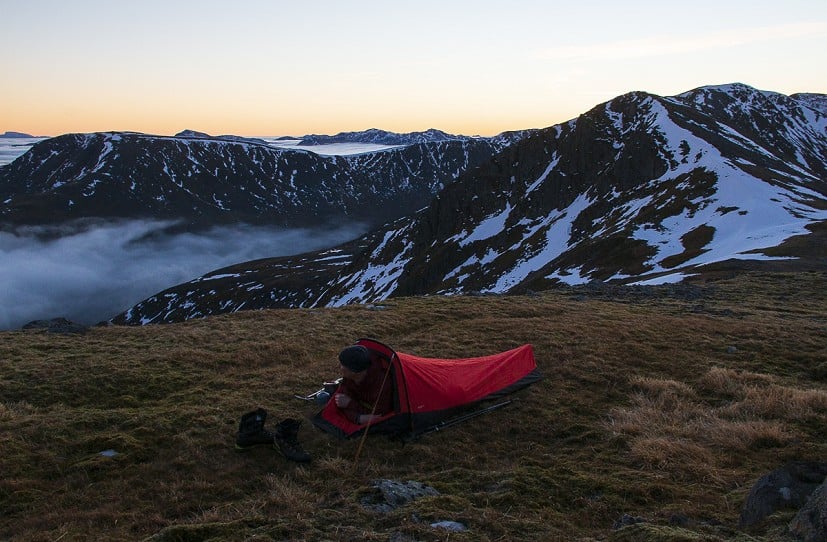

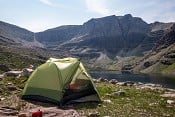
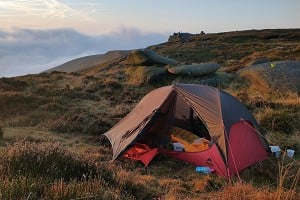
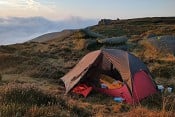
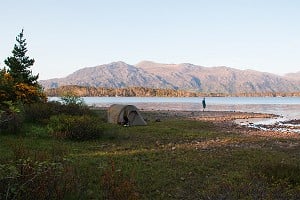
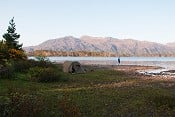
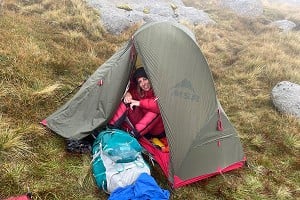
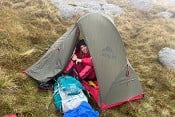





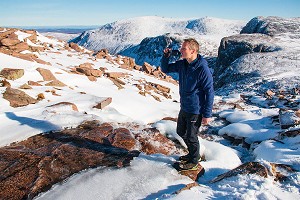
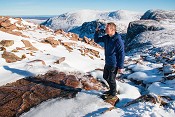
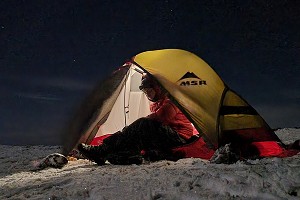
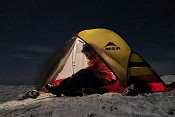
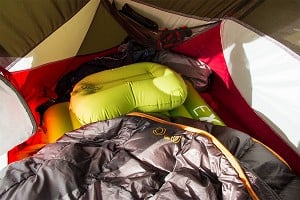
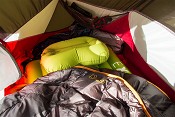
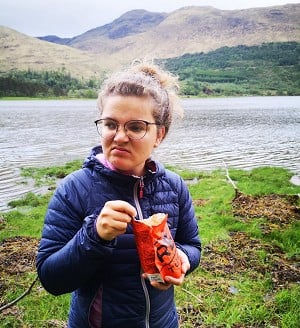
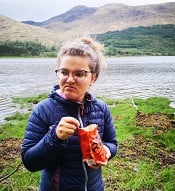
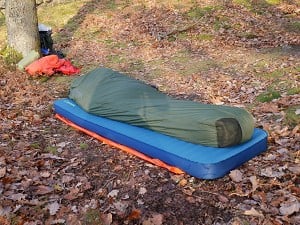
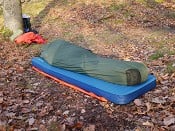
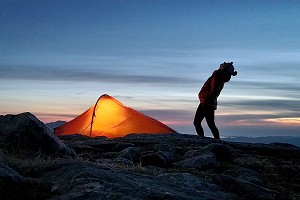
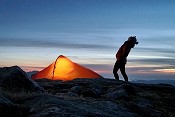
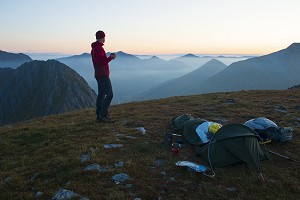



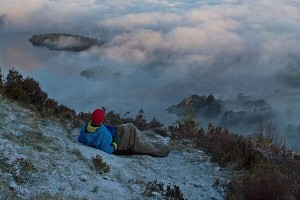
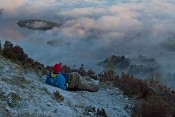

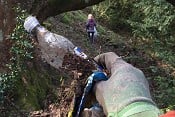


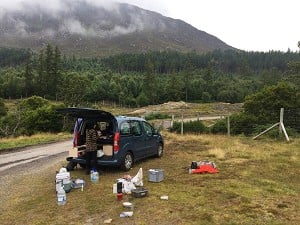
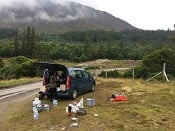


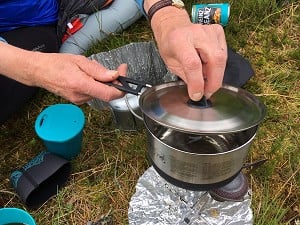
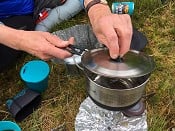
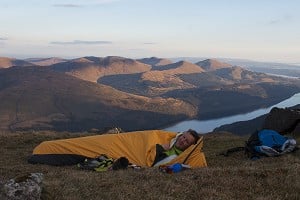
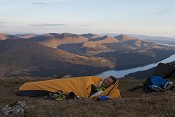




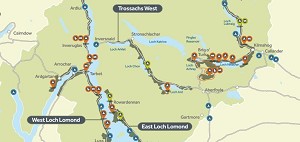





Comments